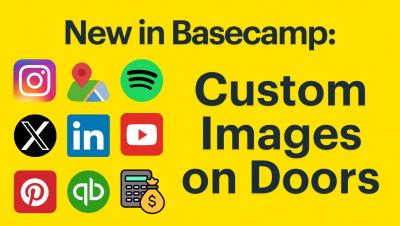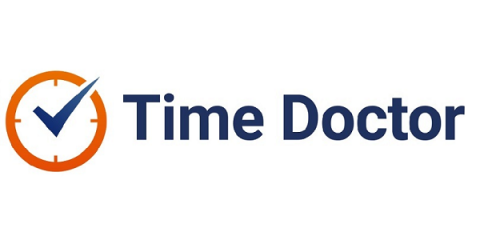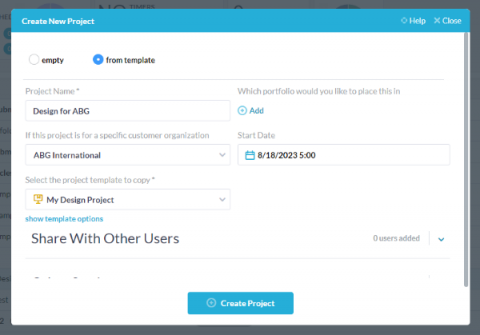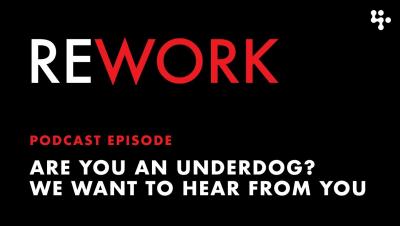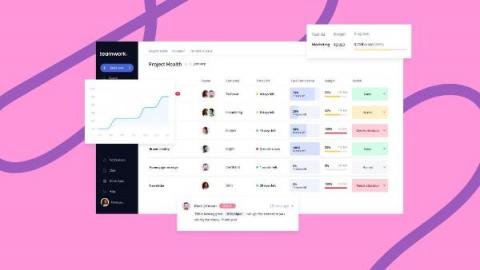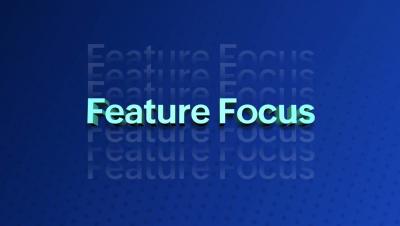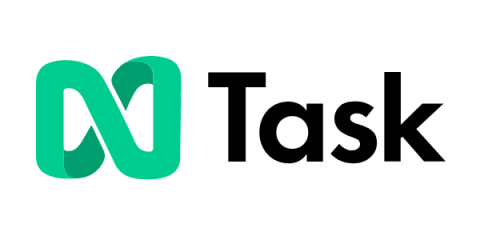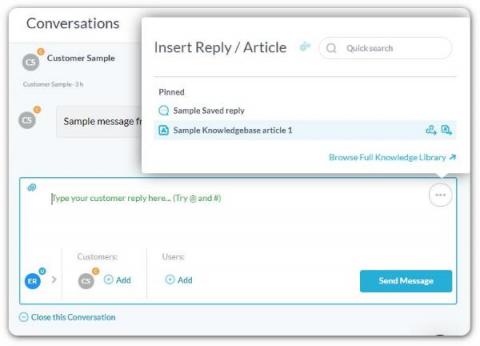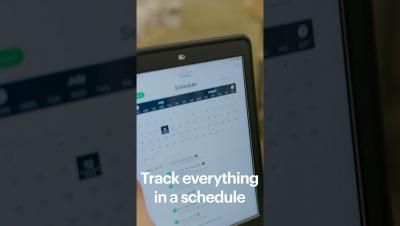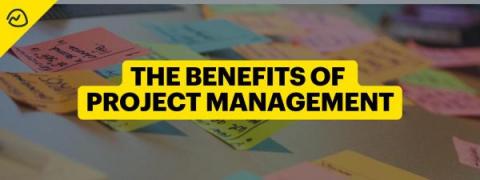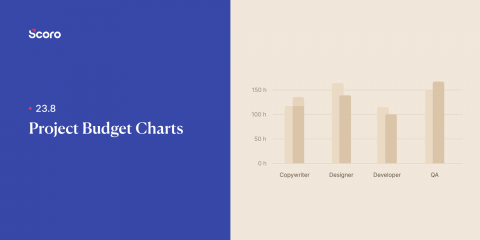Teams | Collaboration | Customer Service | Project Management
August 2023
New in Basecamp: Custom Images for Doors
7 common workplace distractions and how to avoid them
Have you ever been in the middle of a task when a chat message, buzzing phone, meeting invitation or news alert broke your flow? It’s hard to get going again after a distraction. And that’s more concerning than it might seem at first. Most people come up against between 31.6 and 60 distractions in a day. Each distraction pulls our attention away for 5 to 25 minutes, which can quickly add up to an astronomical amount of unnecessary time wasted.
The true value of employee efficiency: Transforming output and savings
Running a business today is a tough gig. It’s fair to say that the combination of two global economic catastrophes in two decades, rising inflation, increasing competition and widespread employee disengagement has business leaders looking for ways to manage costs. But there’s growing evidence that shows cost-cutting is bad for productivity.
Zoho Projects | Feature Focus - Baseline
A complete guide to call center workforce management
To run a contact center that’s both efficient and cost-effective, you need to align people, processes, and resources with the company’s key business objectives. Workforce management (WFM) is crucial for the success of any call center. But building out a WFM function is often easier said than done, especially without the right tools or frameworks.
September 2023 Version Update: Shareable Quote View and Google Sign-in
Boss vs Leader: Understanding the Key Differences
The comprehensive guide to professional services agreements
Let’s be honest: professional service agreements (PSAs) can be difficult to read, and they’re even harder to write. But if you work in the creative industry or the knowledge economy, you’ll probably work with a business or individual providing professional services. There are around 910,000 professional services firms in the United States alone, employing some 9.5 million professionals.
Combatting Sales Burnout: How to Improve Internal Efficiencies
A career in sales can be very fulfilling, but it’s certainly not for everyone. With demanding targets, long hours, and many more pressures to contend with, sales professionals tend to experience something called sales burnout. Though a lot of salespeople thrive under pressure, anyone can experience burnout at work. It’s important to understand and curb burnout as much as possible to hold onto the best people on your team and help them reach their potential.
The CPR Framework for Being More Efficient at Work
Best Project Management Software in the Market
Should you consider productivity analytics for a hybrid team?
A flexible work policy can enable your hybrid team to be their most productive while on the clock. However, managing both in-office and hybrid teams can be tricky, especially without a reliable system for overseeing teamwork, tracking time, and measuring output. In this guide to productivity analytics for hybrid teams, we cover everything you need to know about these tools.
Project Milestones in Project Management
14 Google Tools You Need for Project Management in 2023
Every time I work on this content in Google Docs. Meanwhile, around 4.3 billion people are using Google worldwide now. That gives you an idea of how Google is blended into our day-to-day life. Google has accommodated your personal and professional arena. You'll find most offices and businesses use any of the Google tools.
New August 2023
The August 2023 release of OneDesk is now live! In this release the team has added a variety of usability enhancements and useful new features.
Understanding and Fixing the Skills Gap Between Remote Work and In-presence Work. Are the Skill Sets the Same?
Streamlined solutions: The 6 best PSA software tools for MSPs
Ask any managed service provider (MSP) about their biggest challenge, and they will likely tell you that it’s maintaining efficient workflow and streamlined project management processes. Balancing customer requests and managing multiple projects can quickly become overwhelming, especially without the right tools in place. That’s where professional services automation (PSA) software comes into play.
12 Best Project Planning Tools To Try In 2023
Every project manager wants to use robust project planning tools. After all, the mere thought of using a productivity-enhancing tool can put you into hustle mode, right? However, only 35% of project managers are somewhat satisfied with the current level of PM maturity. To add a layer of clarity to your decision-making, here are the 12 best project planning tools that can add value to your project management style and process.
10 ways to measure employee productivity (pros & cons of each)
With a system for measuring productivity levels, you can see which employees positively impact your bottom line the most and use their methods to level up the rest of your team. That said, choosing the right productivity metrics and implementing tracking systems are often the biggest roadblocks. Should you focus on quality or quantity? Do you need productivity software, or can you measure manually?
Are You an Underdog in Business? We Want to Hear from You!
What is professional services automation? Here's what to know
Successful project management and service delivery require efficient coordination of resources and processes. But let's be real here: Coordinating a complex web of tasks across different teams and departments can be overwhelming. Between staffing, budgeting, resource utilization, and billing, you can spend more time on administrative tasks than actually serving your customers. This can seriously hurt your bottom line and damage your reputation. But don't worry.
13 best clock-in clock-out systems (manual & automated)
No matter where your team works, tracking employee time is crucial for managing costs and planning projects. If you’re exploring a new work model or growing your team, it’s worth rethinking your time tracking system or implementing one for the first time. But if you’ve tested time clock systems before, you may have discovered a few disadvantages, such as: So, what’s the most reliable method for your business structure and work model?
Asynchronous Work: The Future of Workplace
Mastering Operational Efficiency: Insights, Strategies, and the Journey Behind 'Come Up for Air'
Unlocking efficiency: Proven tips for professional services billing
Accurate, streamlined billing processes are absolutely essential for professional service providers. It’s how your business generates revenue, tracks payments, and maintains cash flow. But too often, businesses rely on manual processes that are time-consuming, prone to errors, and difficult to keep up with, risking unbilled hours, frustrated clients, and decreased profit margins.
Challenges of Flextime Manager and How to Overcome Them
Boost Operational Efficiency with Business Process Automation
HR Best Practices for Encouraging Personal Growth in the Remote Workplace
Top 5 project management trackers (with templates included)
The whirlwind of to-dos, deadlines, and don’t-forgets of project management can challenge even the most experienced project manager. That's why having the right project management tools in your arsenal is crucial for staying organized and on top of tasks. Project management trackers help you keep tabs on all the moving parts of a project, like assigning tasks, monitoring progress and deadlines, and tracking expenses.
Introducing - Feature Focus for Zoho Projects
How Basecamp Became a 100% Remote Company
It’s been more than three years since we closed our office in Chicago, and since many companies are still trying to figure out what to do about their office space, we thought we’d share our story. Moving is never fun. It’s bad enough when it’s your stuff, but ten years of stuff makes it even worse. As folks outside of Basecamp learned of our impending office closure, I began to get some questions. The most common being “what did you do with the stuff?
The power of project management benchmarking
Ever wondered why some projects seem to glide effortlessly to success, while others seem to hit every bump in the road? The answer might lie in the power of benchmarking. As the legendary management consultant Peter Drucker once said: “What a business needs most for its decisions — especially its strategic ones — is data about what goes on outside it. Only outside a business are there results, opportunities, and threats.”
Beyond the Surface: Exploring the Layers of True Productivity
Let’s start with a simple question: What is productivity? The term comes from “product,” which basically means something that’s created. But in the world of work and personal growth, productivity has grown into something much bigger. It’s about the efficiency and effectiveness with which tasks are completed. It’s about the balance between the quality and quantity of work, and the time and resources used to achieve it.
Canned Responses for Help Desk
Canned responses are a must-have tool for any help desk system. Canned responses are pre-written responses you can use to reply to questions and issues received from your customers. Canned responses can make your agent’s life easier and save your company time and money. When done effectively, canned responses can also boost your customer support. In today’s article we will go over canned responses, their benefits, as well as examples and best practices for using them.
Basecamp has everything you need and nothing you don't
#basecamp #projectmanagement #smallbusiness #projectmanagementtools #projectmanagementsoftware #smallbusiness #smallbusinesstips
The 3 major challenges of scaling a BPO
The BPO industry is booming, but many outsourcers still need help growing their company. Scaling beyond 1,000 seats is something that relatively few BPOs achieve, but it’s entirely possible as long as owners are prepared to take risks and persevere with a growth-focused approach. This article will explore why BPOs find it so hard to scale.
Creative Project Manager: How to Manage Your Creative Projects Effectively
The Power of Deep Work: How to Accomplish More in Less Time
Deep work, as defined by productivity expert Cal Newport, refers to the ability to focus intensely on a cognitively demanding task without distractions. In today’s world of constant interruption, deep work has become a rare commodity. While technology has made our lives easier in many ways, it has also made it difficult to accomplish meaningful work without succumbing to the lure of social media, notifications, and other distractions.
Why Do Companies Use Online Collaborative Productivity Software?
7 important project management analytics and metrics
Modern project management is more than a series of boxes to check — it’s about leveraging data and analytics to make smarter decisions, track progress, and improve performance. Project management analytics and metrics create a powerful, data-driven toolkit for project managers to accurately track progress, evaluate performance, and guide decision-making.
The ultimate guide to fostering a thriving culture in your distributed team
Hello, aspiring culture builders and rockstar team leaders! So, you have a team that is dispersed across cities, nations, and possibly even continents, and your goal is to promote a thriving culture rather than merely keep things going smoothly. We understand that it’s a big task, but truly, is it worth it! A distributed team culture isn’t just about people clocking in and out from different time zones.
What's New in Asana | August 2023
Smart Workplace Technology
Part Time, Full Time or Hourly - How to Decide When Hiring
Boosting team productivity: The power of operational metrics
Like parents monitoring their kids’ whereabouts to keep them out of trouble, project managers monitor performance metrics to make sure their projects stay on track. With the wealth of data available today, however, trying to keep up with all of it can sometimes feel like drinking from a firehose. If you want your data to yield beneficial insights, it’s important to hone in on the KPIs and operational metrics that impact project and agency performance the most.
How to Transform your Agency's Operations - Webinar with Agency Hackers
Offshoring vs Outsourcing
Get that "We did it!" feeling with Basecamp
How to Manage Employee Workload
Streamline Scheduling with Shift Status Schedule System
How to Build a Positive Company Culture That Drives Results
Accountability and Responsibility in the Workplace
Overworking and Burnout
Story Points or Hours: How IT Project Managers Can Choose The Best Estimation Method
Let’s discuss the age-old debate between two popular estimation methods in IT project management – story points or hours. As every project manager knows, accurately estimating time and effort is crucial for ensuring the successful completion of a project. But with various approaches available, finding the right method that aligns with your team’s needs can be daunting. Fret no more!
Benefits of Project Management Software
Project management looks different for everyone and every business. Trust us. Over 20 million people have worked on a project inside Basecamp, so we’ve seen it all. And this front row seat has reinforced our belief in the power of projects. To us, project management is a no brainer. But to some, they don’t quite see the point. Usually, because they don’t really understand the benefits of project management to begin with. We hear it all the time by those who haven’t tried it.
Client Management Strategies for Agencies to Build Better Relationships
Good client experiences in the agency world aren’t always the norm. Here’s how to make them yours. Horror stories about poor client experiences make the rounds online, in friend circles, and between colleagues. These stories can include anything from a lack of communication to being scammed out of money for deliverables. Either way, your brand reputation extends beyond just your work; it encompasses the entire client experience.
Untapped Potential in BPO Influencer and Affiliate Marketing
Self-service task creation helps employees meet unique client needs: Self-Assigned Tasks are here!
One of the most obviously useful reasons to adopt Time Doctor is how we make it simple to track and analyze the time your team dedicates to various projects, clients and tasks. Without the need for separate project management tools, this makes it possible to understand workloads, accurately bill clients and correctly pay employees/contractors. This incredibly valuable connection between time, tasks and invoicing/payments does require some work on the back-end.
7 powerful project management tools for ad agencies
Simon Severino, a business strategy coach, has a 90-day plan for when she coaches teams on project management: “What we do in 90 days is — month one, we free up 10 to 14 hours of their time by better organizing, better processes.” This is the power of project management for ad agencies. Done right (and using the right tools), your agency can streamline processes to deliver high quality deliverables in less time. But what do the “right tools” look like?
How to Improve Accountability in the Workplace
X Habits of Successful People
Agency pricing models 101: What you should know
Has your agency grown in the past few years, despite the numerous disruptions we’ve been through? If so, you’re not alone. Marketing as an industry is still growing fast. There are 54% more agencies today than five years ago, and the average staff size has grown at the same time. If you’ve enjoyed some of this growth, then it’s possible you’ve outgrown your current agency pricing model.
Finding harmony: Achieving work-life balance in distributed teams
Let’s talk about something important for us all – work-life balance. You’ve probably heard this term a lot and for good reason. It’s all about striking that perfect harmony between our professional commitments and personal lives. Sounds simple enough, right? Well, it can get a bit complicated, especially when we’re talking about distributed teams.
Healthcare industry outsourcer Dentistry Support sees 85% increase in employee efficiency with Time Doctor
A leading outsourcing servicing for US dental practices embraced Time Doctor to refine the speed, consistency and impact of its remote team’s work.
Key Project Manager Roles and Responsibilities (+Bonus Tips)
When it comes to project manager roles and responsibilities, they don many hats. They are the orchestrators, problem solvers, and the driving force behind successful projects. But with this array of responsibilities comes a host of challenges that require deftness and skill. From coordinating teams to managing resources, a project manager must navigate a complex business landscape while keeping the project on track.
Metrics that Matter: A Deep Dive into Maximising Agency Profitability
9 project management interview questions for your next hire
A qualified project manager with the proper skill set, experience, and attitude is critical for successful project management. Project managers oversee the entire project lifecycle, from planning and scheduling to execution and delivery, ensuring projects are completed on time, within budget, and to the agreed-upon quality standards. They are also responsible for risk management, stakeholder management, and resource allocation.
Influencer Marketing in BPO Industry: An Unusual Acquisition Channel
Visionary Leadership in Action: How to Inspire Change and Drive Personal Growth in the Workplace
Project manager or project coordinator: Understanding job roles and responsibilities
General Electric CEO Jack Welch once said: “Good business leaders create a vision, articulate the vision, passionately own the vision, and relentlessly drive it to completion.” So, when it comes to project management, who’s responsible for this all-important mission? Today, there are two primary project management roles with the responsibility of overseeing projects and guiding project teams to the promised land: project managers and project coordinators.
The Best Apps for Time Management to Get You Organized and Productive
Understanding profit margins in the BPO industry
Over the past few decades, BPOs (Business Process Outsourcers) have become an increasingly important part of the global economy. By outsourcing activities like customer service, back-office administration, and accounting, businesses can make cost savings, improve performance, and focus on their core business. In return, BPOs earn a profit on the services they provide, just like any other business.
Asana for PMOs: Driving strategy using Goals
Asana for Operations: Effectively manage intake requests
Asana for Finance: Save time with your month-end close
The 8 best product management tools
Nishar’s quote perfectly sums up the diverse challenges of managing product development. Product managers must be able to think strategically, plan out tasks, and coordinate the execution of product initiatives. But let’s face it: Juggling user research, product planning, prototyping, and customer feedback can be overwhelming. That’s why having the right product management tools in your arsenal is essential.
How do Project Managers Stay Organized? Key Secrets
It's challenging to hold the role of project manager. To lead and supervise teams during the project's planning, execution, resource budgeting, controlling, coordination, and delivery, project managers need a broad range of project management abilities.
How to create a call center agent performance scorecard
Providing a superior customer experience is more important than ever for high-performing call centers. Customer-focused companies are 60% more profitable, and happy customers pay up to 10% more for great service. However, creating a better customer experience can be difficult when you lack the right tools. That’s why having a call center agent performance scorecard helps you efficiently measure your team’s work and take essential steps to improve.
How to master your call center forecasting and scheduling
As a call center manager, you’re constantly trying to strike a balance between scheduling enough agents to handle calls and keeping your staffing budget as tight as possible. To hit your call center KPIs (key performance indicators) reliably, getting this balance right is essential. However, you’re wasting time and money if you’re not using a proven forecasting method or still scheduling with spreadsheets (or pencil and paper).
Millenials, Gen Z, Gen X. What are Their Attitude Differences in the Workforce
August 2023 Version Update: Project Budget Charts
Product management vs. project management: A comparison of roles and responsibilities
Managing change, creating common vision, and reaching desired outcomes are the three most vital priorities for anyone responsible for leading teams. In many agencies, this includes project managers, product managers, or both. While the names and day-to-day tasks of project managers and product managers may be similar, it’s worth understanding the significant differences between the roles. At a basic level, it’s as simple as it sounds.
5 strategies for getting clients to pay on time
When late payments are the rule and not the exception, the stability of your agency is at risk. Find out how to maintain cash flow with our five tips for getting clients to pay on time, every time. A recent Chaser study finds that 87% of businesses report that their invoices get paid after the due date. If you don’t have a system for ensuring clients pay you on time, you’re limiting your growth and sacrificing almost half your revenue.



